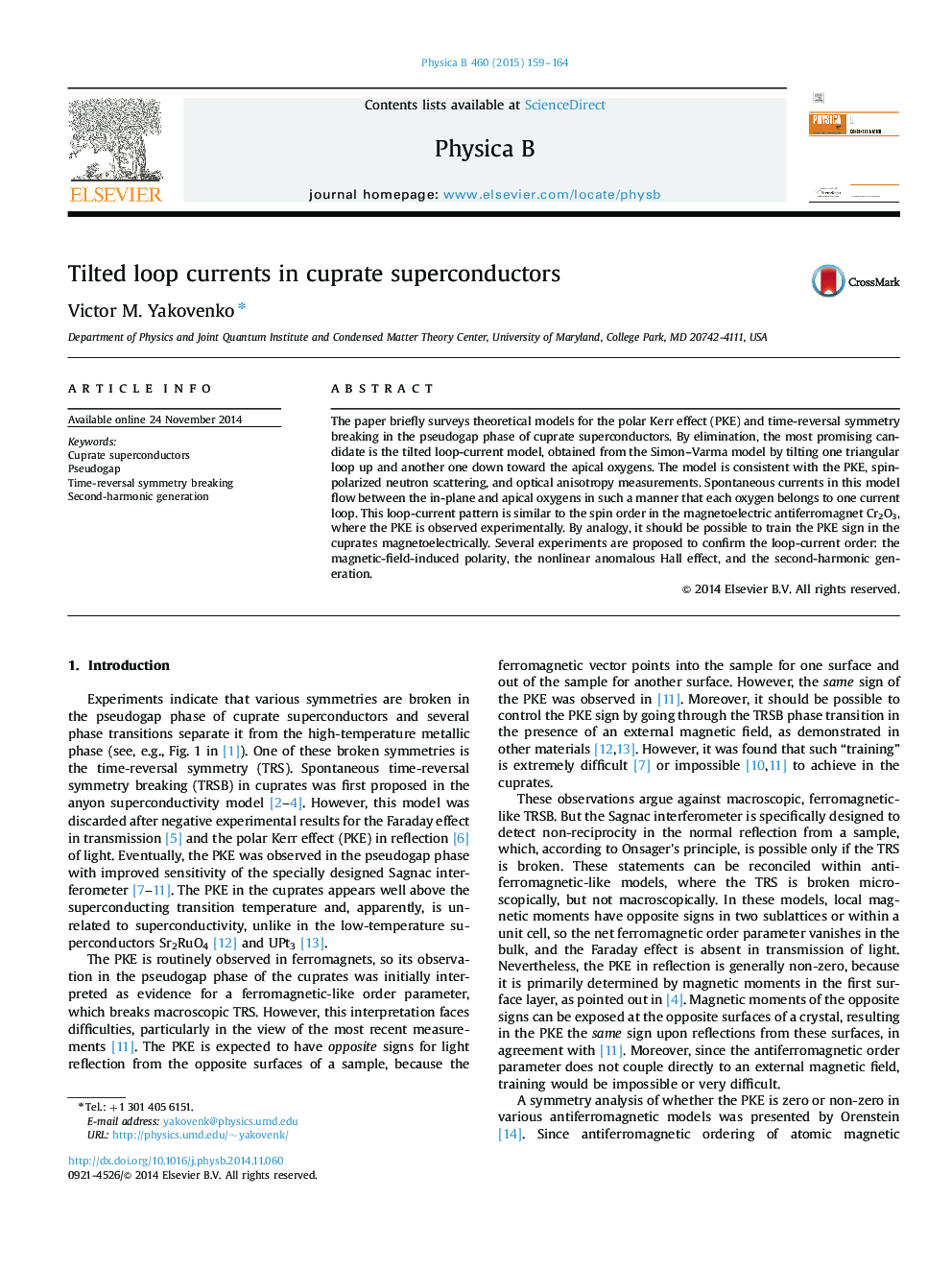| Article ID | Journal | Published Year | Pages | File Type |
|---|---|---|---|---|
| 1808999 | Physica B: Condensed Matter | 2015 | 6 Pages |
The paper briefly surveys theoretical models for the polar Kerr effect (PKE) and time-reversal symmetry breaking in the pseudogap phase of cuprate superconductors. By elimination, the most promising candidate is the tilted loop-current model, obtained from the Simon–Varma model by tilting one triangular loop up and another one down toward the apical oxygens. The model is consistent with the PKE, spin-polarized neutron scattering, and optical anisotropy measurements. Spontaneous currents in this model flow between the in-plane and apical oxygens in such a manner that each oxygen belongs to one current loop. This loop-current pattern is similar to the spin order in the magnetoelectric antiferromagnet Cr2O3, where the PKE is observed experimentally. By analogy, it should be possible to train the PKE sign in the cuprates magnetoelectrically. Several experiments are proposed to confirm the loop-current order: the magnetic-field-induced polarity, the nonlinear anomalous Hall effect, and the second-harmonic generation.
